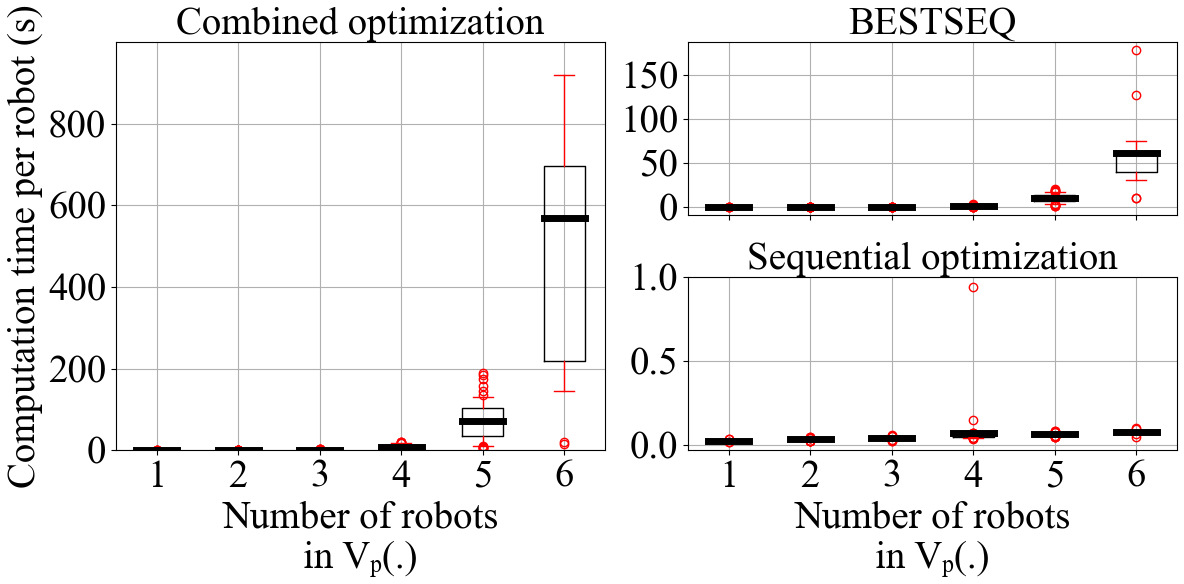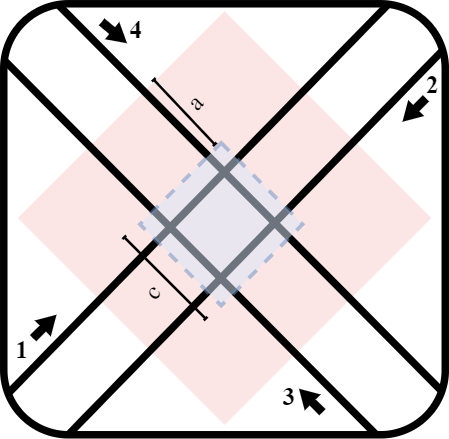Reinforcement Learning Aided Sequential Optimization for Unsignalized Intersection Management of Robot Traffic (2302.05082v3)
Abstract: We consider the problem of optimal unsignalized intersection management, wherein we seek to obtain safe and optimal trajectories, for a set of robots that arrive randomly and continually. This problem involves repeatedly solving a mixed integer program (with robot acceleration trajectories as decision variables) with different parameters, for which the computation time using a naive optimization algorithm scales exponentially with the number of robots and lanes. Hence, such an approach is not suitable for real-time implementation. In this paper, we propose a solution framework that combines learning and sequential optimization. In particular, we propose an algorithm for learning a shared policy that given the traffic state information, determines the crossing order of the robots. Then, we optimize the trajectories of the robots sequentially according to that crossing order. This approach inherently guarantees safety at all times. We validate the performance of this approach using extensive simulations and compare our approach against $5$ different heuristics from the literature in $9$ different simulation settings. Our approach, on average, significantly outperforms the heuristics from the literature in various metrics like objective function, weighted average of crossing times and computation time. For example, in some scenarios, we have observed that our approach offers up to $150\%$ improvement in objective value over the first come first serve heuristic. Even on untrained scenarios, our approach shows a consistent improvement (in objective value) of more than $30\%$ over all heuristics under consideration. We also show through simulations that the computation time for our approach scales linearly with the number of robots (assuming all other factors are constant). Learnt policies are implemented on physical robots with slightly modified framework to address real-world challenges.
Sponsored by Paperpile, the PDF & BibTeX manager trusted by top AI labs.
Get 30 days freePaper Prompts
Sign up for free to create and run prompts on this paper using GPT-5.
Top Community Prompts
Collections
Sign up for free to add this paper to one or more collections.


